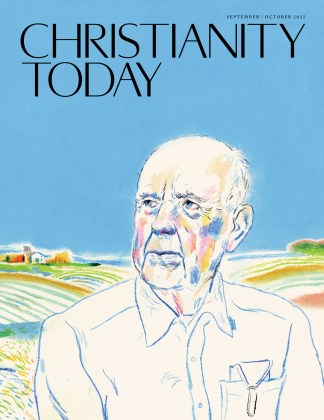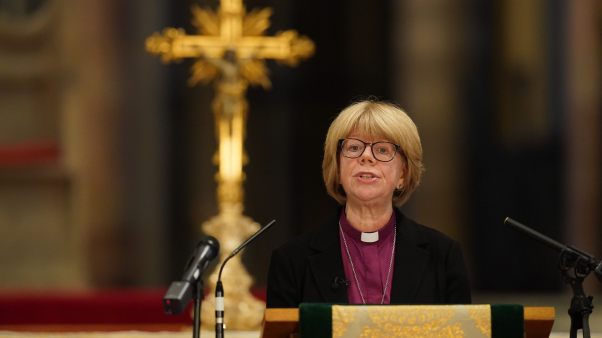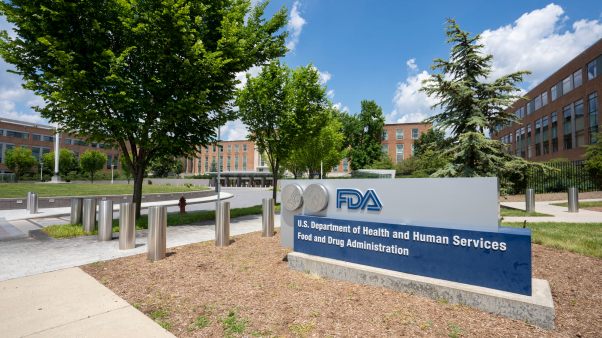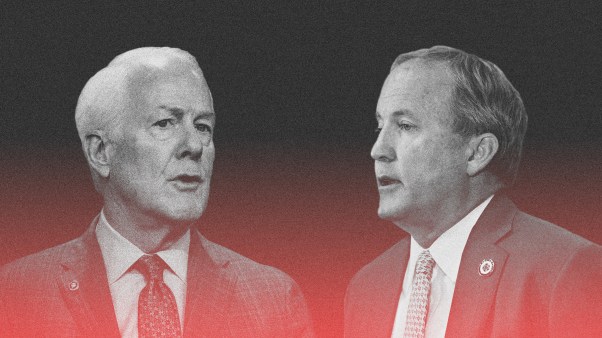William Perkins (1558-1602)
The C. S. Lewis of the Puritan movementA 17th-century source describes an incident in the prison ministry of William Perkins: A young felon proceeding to the scaffold looked half dead, “whereupon Master Perkins laboured to cheer up his spirits, and finding him still in an agony, and distress of mind, he said unto him, ‘What, man? What is the matter with thee? Art thou afraid of death?’
“‘Ah no (said the prisoner, shaking his head) but of a worser thing.’
“‘Sayest thou so? (said Master Perkins) Come down again, man, and thou shalt see what God’s grace will do to strengthen thee.’
“Whereupon the prisoner coming down, Master Perkins took him by the hand, and made him kneel down with himself … when that blessed man of God made such an effectual prayer in confession of sins … as made the prisoner burst out into abundance of tears; and Master Perkins finding that he had brought him low enough, even to hell gates, he proceeded to the second part of his prayer, and therein to show him the Lord Jesus … stretching forth his blessed hand of mercy … which he did so sweetly press with such heavenly art … as made [the prisoner] break into new showers of tears for joy of the inward consolation which he found … who (the prayer being ended) rose from his knees cheerfully, and went up the ladder again so comforted, and took his death with such patience, and alacrity, as if he actually saw himself delivered from the hell which he feared before, and heaven opened for the receiving of his soul.”
This ministry to the condemned in the Cambridge castle jail may reflect Perkins’s sudden conversion as an undergraduate at Christ’s College. A possibly apocryphal tale says that the worldly student overheard a woman scolding her son, “Hold your tongue, or I will give you to drunken Perkins yonder.” His conscience convicted, his life made a sharp turn sometime between 1581 and ’84, when he was in his mid-twenties.
Having enrolled at Christ’s College in 1577, he gained his B.A. in 1581 and M.A. in 1584, and in that latter year he became both a faculty member of Christ’s College and a preacher at Great St. Andrews Church in Cambridge. Preaching in a powerful, resonant voice to both townspeople and students for 18 years until his death at age 44, he had an effective ministry both to an academic audience and to ordinary people. J. I. Packer has referred to Perkins as “the C. S. Lewis of the Puritan movement.”
Perkins’s writings ranged over topics from predestination to cock-fighting, from witchcraft to equity. Strongly Calvinistic in his theology, his collected writings, totaling over 2,500 pages, reached eight printings between 1608 and 1635 and were translated into half a dozen languages. Packer has termed Perkins “the dominant Puritan theologian for the last two decades of Elizabeth’s reign” and the “father-figure,” “pioneer,” “architect,” and “most formative” of the Puritan devotional writers down through Richard Baxter almost a century later. His many works are characterized by a mastery of biblical doctrine and knowledge of people’s inner needs, combined with an urgent concern for the salvation of souls.
—W.B.
John Milton (1608-1674)
Blind poet of paradiseStill regarded by most literary scholars as the second-greatest English writer (behind Shakespeare), John Milton was correctly labeled by theologian Augustus Strong as “a Puritan of the Puritans” and the one in whom “the English Reformation finds … its poetical embodiment and expression.”
Milton’s Puritanism owed much to an experience that his father had as a teenager growing up in a Catholic home. Milton’s father was disinherited and left homewhen he was discovered reading an English Bible in his room. He made sure that his own son did not suffer a similar fate. He sent his child prodigy to a local Christian grammar school called St. Paul’s School, located in the shadow of St. Paul’s Cathedral. At the end of Milton’s home street, Bread Street, stood the local parish church, where the Puritan pastor Richard Stock preached twice on Sundays and catechized the neighborhood children on weekday afternoons. The climax of Milton’s education was studying at one of the most Puritan of the Cambridge colleges—Christ’s College.
The story of Milton’s career choice is the story of a young Puritan thwarted by the state church. Theoretically headed for the ministry throughout his college education, Milton would not have been welcome in the Church of England. He himself spoke of having been “church-outed by the prelates.” So Milton chose to write Christian poetry as his vocation, because he regarded poetry as being “beside the office of a pulpit” in its inherent dignity and influence on society.
Before Milton wrote his major poems, however, the Civil War occurred. Milton self-consciously laid aside his poetic calling for 20 years to become an important international political figure in the Puritan cause. He became Latin secretary to Oliver Cromwell. He wrote volumes of pole-mical prose defending the regicide of Charles I and articulating the Puritan position on political and ecclesiastical issues.
The chief importance of the 20-year break was that Milton became totally blind midway through the period. His fortitude and submission to God’s will as he weathered this trauma are evident in his famous sonnet that begins, “When I consider how my light is spent,” and ends with the sentiment, “They also serve who only stand and wait.”
Following his political career, the blind poet composed his major works—Paradise Lost, Paradise Regained, and Samson Agonistes—all of which embody Christian themes and subject matter. But his lyric poems, especially his sonnets, are as great as his major works.
Late in his life, Milton resided on Bunhill Row, close to Bunhill Fields, the famous cemetery where numerous Puritans are buried (including John Owen and John Bunyan). He was buried in St. Giles Cripplegate Church, which today houses busts of Cromwell and Bunyan in addition to Milton.
Milton died without having realized his vision of a reformed English society but still believing in the ideals of what the Puritans themselves called “the Good Old Cause.”
—L.R.
John Owen (1616-1683)
The Calvin of EnglandIn the spring of 1655 there were rumors of a Royalist uprising against the regime of Oliver Cromwell, particularly at Oxford. That university town had been the base for the forces of Charles I, who was executed in 1649. The Vice Chancellor of the University took charge of the security of the town and county, riding at the head of a cavalry troop, armed with sword and pistol. This was the 39-year-old John Owen, tall and imposing, dressed more like a layman than the clergyman he was. According to a contemporary historian of Oxford University, not particularly friendly to the Puritans, Owen “went cloakless to show off his figure, powdered his hair, and wore large tassels on his bandstrings, pointed ribbons at his knees, Spanish leather boots with large lawn tops, and his hat mostly cock’d.”
Although described in dress and action uncharacteristic of a Puritan minister, Owen was nevertheless the outstanding theologian and an ecclesiastical and political leader during the era of the Puritan Commonwealth and Cromwell’s Protectorate, 1649-58. Such scholars as J. I. Packer, Peter Toon, and Sinclair B. Ferguson have agreed in calling him “the Calvin of England,” “the greatest of the Puritan scholastics,” and “the theological giant among the Puritans.”
His writings have remained in print for more than 350 years, some of his more practical and devotional works being available today in paperback. The 19th-century edition of his works occupied 24 volumes—including his 7-volume commentary on Hebrews and also his great work on the Holy Spirit, said by some to be the first systematic treatment of the Holy Spirit by a Christian theologian. It was John Owen who recommended the manuscript of John Bunyan’s The Pilgrim’s Progress to his publisher, Nathaniel Ponder, thus assuring that this Puritan classic would reach posterity.
Born in 1616, Owen received his B.A. and M.A. from Oxford by 1635 and moved to London when the Civil War broke out in 1642. Serving as vicar of a parish in Essex, he became a frequent preacher to Parliament and eventually a chaplain and spiritual adviser to Cromwell. His first masterpiece was published in 1647, The Death of Death in the Death of Christ, setting forth the doctrine of “limited” (that is, definite or particular) atonement.
Richard Baxter took issue with this position and viewed Owen as an unfortunate substitute for the deceased, more moderate Jeremiah Burroughes among the leaders of the Independents or Congregationalists. Nevertheless, after the monarchy was restored and both Baxter and Owen were ejected from their positions, Owen wrote to Baxter in 1667, when the latter was seeking to promote unity among the nonconformists: “Sir, I shall pray that the Lord would guide and prosper you in all studies and endeavors, for the service of Christ in the world, especially in this your desire and study for the introducing of the peace and love promised among them that believe, and do beg your prayers.”
—W.B.
John Bunyan (1628-1688)
The preaching tinkerDr. John Owen, who from his Oxford days had connections with many in high places, was once asked by King Charles II why he listened to an uneducated tinker. His reply: “Could I possess the tinker’s abilities for preaching, please your Majesty, I would gladly relinquish all my learning.” This uneducated tinker/preacher was the Puritan John Bunyan, author of The Pilgrim’s Progress, which next to the Bible is the best-selling Christian book of all time. Also significant among his 60 books produced during some 30 years of ministry are his other allegory, The Holy War, and his autobiographical account of his four-year quest for assurance of salvation, Grace Abounding to the Chief of Sinners.
Bunyan was born in the village of Elstow, just south of the town of Bedford in central England. His father was a “brasier,” a maker and mender of pots and kettles, and the young Bunyan, after a two-and-a-half-year stint in the Parliamentary army as a teenager, would return to Elstow as an apprentice to his father in 1647. With sufficient education to read and write, he benefited from two devotional books that his bride brought as her dowry and became regular in church attendance. Although “a brisk talker on religion,” he realized he lacked the personal knowledge of God that he sensed in some poor women whose conversation he overheard. He finally found peace of soul after an agonizing inner conflict, as described in Grace Abounding, and in 1653 joined the nonconformist church in Bedford to which the poor women belonged. By 1657 he was formally set apart to the office of preacher.
As he traveled, pursuing his trade as a tinker, or mender of pots, he used every opportunity to preach—in woods, in barns, on village greens, or in town chapels—and his fame as a preacher spread. He also began to write, showing an energetic style, a command of plain English, and a thorough knowledge of the Bible.
With the restoration of the monarchy, laws against nonconformity were revived, and Bunyan was arrested for preaching without a license. He was imprisoned in the county jail, where he would spend most of the next 12 years. His first wife having died, Bunyan had in 1659 married a second wife, Elizabeth, who cared for his four motherless children and eventually bore him two more. During his lengthy imprisonment she pleaded diligently for his release while he helped to support the family from prison by making long-tagged shoelaces, “many hundred gross of which he sold to the hawkers.” His imprisonment did, however, give him more time and incentive to write, and from his cell came most of his great literary works.
Thanks to Charles II’s covert intention of favoring Roman Catholics in England, Bunyan was among the nonconformists pardoned in 1672 by virtue of a Declaration of Indulgence. Called to be pastor of the Bedford church, now meeting in the barn of one of its members, he used it as a base for an itinerant ministry so extensive and influential that he became playfully known as “Bishop Bunyan.” Imprisoned once again in 1676, he was released after six months, and in 1678 John Owen aided in the publication of The Pilgrim’s Progress, which became an immediate hit and has remained so for more than three centuries.
Best identified as a Particular Baptist of an open sort—one who is Calvinistic in theology, congregational in polity, and adhering to believer’s baptism though not requiring immersion for church membership—Bunyan reflects the impact of the Puritan movement upon the lower middle class of 17th-century England. He in turn has become perhaps the most influential of all English Puritans.
—W.B.
William Barker is adjunct professor of church history at Covenant Theological Seminary. Leland Ryken is Clyde S. Kilby Professor of English at Wheaton College.
Copyright © 2006 by the author or Christianity Today/Christian History & Biography magazine.Click here for reprint information on Christian History & Biography.










